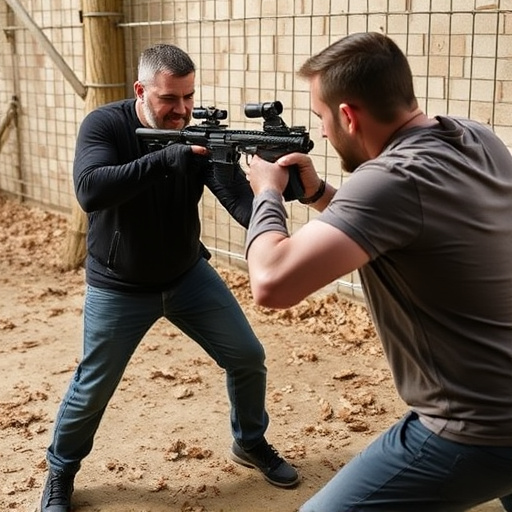Learn proper targeting techniques for maximized stun gun effectiveness and minimized collateral damage. Prioritize safety through training, authorization, understanding local laws, protective gear, clear line of sight, and immediate disablement. Regularly practice aiming at vulnerable zones like neck, shoulders, and groin. Consult region's laws before considering a stun gun for self-defense. Ensure safe use with proper maintenance, storage, inspection, cleaning, and handling techniques.
Discover the power of self-defense with an in-depth look at debilitating electrical charge weapons, commonly known as stun guns. This comprehensive guide unravels the inner workings of these non-lethal devices, from their surprising effectiveness to crucial safety protocols. Learn essential targeting techniques and understand legal boundaries, ensuring you’re equipped with knowledge for responsible protection. Explore maintenance tips and storage best practices to keep your stun gun in top condition, ready when you need it most.
- Understanding Stun Gun Functionality
- Safety Measures Before Deployment
- Targeting Techniques for Optimal Shock
- Legal Considerations and Use Cases
- Maintaining and Storing Your Stun Gun Properly
Understanding Stun Gun Functionality
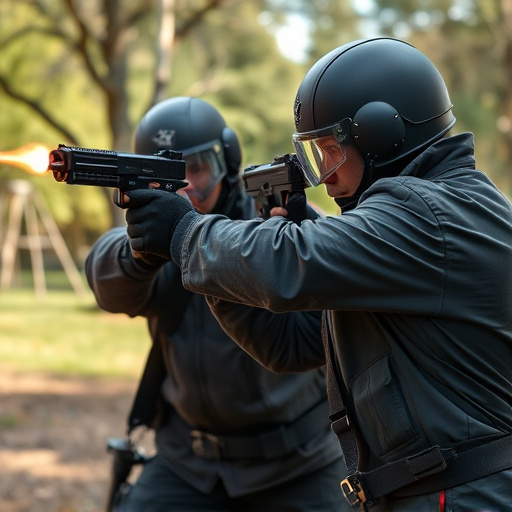
Stun guns, also known as electronic control devices (ECDs), are non-lethal weapons designed to temporarily incapacitate a target through electrical discharge. They operate by delivering a strong electric current through two prongs or probes into the body of the intended subject. This sudden jolt disrupts normal muscle function, causing temporary paralysis and loss of balance. The key to safe use lies in understanding their limitations and proper handling.
When using a stun gun for protection, it’s crucial to ensure both personal safety and that of others around you. Always aim for the center mass of the target—the body between the neck and waist—to maximize effectiveness while minimizing collateral damage. It’s important to remember that stun guns are not meant to be used as a primary form of self-defense but rather as a last resort when facing an imminent threat. Regular training and familiarization with the device’s range, power settings, and safety features are essential for safe and effective deployment.
Safety Measures Before Deployment

Before deploying any electrical charge weapon, such as a stun gun, for protection, it’s crucial to prioritize safety measures. Always ensure that you are trained and authorized to use such devices, as incorrect handling can result in serious harm or even death. Familiarize yourself with local laws and regulations regarding stun guns, as their use is strictly regulated in many areas.
Additional safety precautions include wearing protective gear, like gloves and eye protection, to minimize the risk of electrical shock or damage to your eyes. Keep a clear line of sight on the target, aiming for specific pressure points as instructed by proper training. Never point or activate the device unless absolutely necessary, and always be prepared to disable it immediately if the situation changes or if it comes into contact with unintended subjects.
Targeting Techniques for Optimal Shock
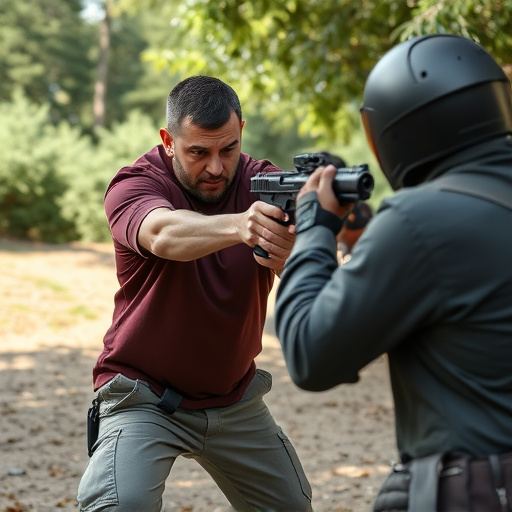
Targeting techniques play a crucial role in the safe and effective use of a stun gun for personal protection. To achieve optimal shock, users must accurately assess and aim for specific target zones on the body. The neck, shoulders, and groin are particularly vulnerable areas as they contain large nerve clusters and vital organs. Proper training in hand-to-hand combat or similar techniques can help improve aiming accuracy, ensuring the stun gun’s electric charge is delivered precisely where needed.
When using a stun gun for protection, it’s essential to understand that aiming for non-lethal force requires careful consideration. Users must balance the need for incapacitation with potential collateral damage. Proper training and practice can help individuals learn how to safely use a stun gun, minimizing risks while maximizing its effectiveness in self-defense scenarios.
Legal Considerations and Use Cases
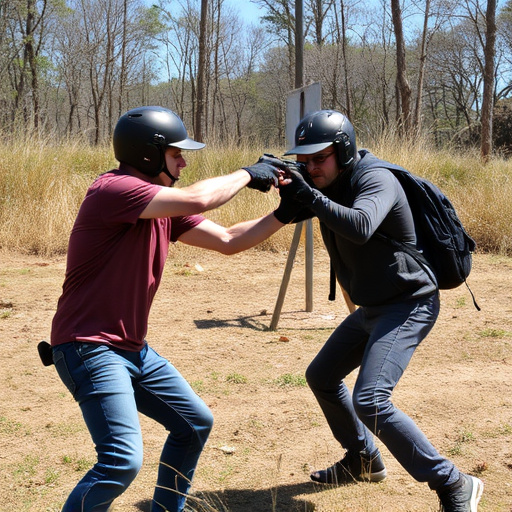
The legal landscape surrounding electrical charge weapons, commonly known as stun guns, varies greatly by jurisdiction. Understanding local laws is paramount when considering how to safely use a stun gun for protection. Possession and use of stun guns are regulated in many countries and states, with strict guidelines on who can own them and where they can be used. Individuals seeking self-defense options should consult their region’s legal framework to ensure compliance.
Stun guns have found applications in various scenarios, from personal safety to law enforcement tactics. Their non-lethal nature makes them a preferred choice for individuals seeking deterrence without causing permanent harm. In some regions, stun guns are used by security personnel, citizens, and even victims of domestic violence as a means of protecting themselves until help arrives. Proper training and adherence to legal protocols are essential for safe and effective use in these cases.
Maintaining and Storing Your Stun Gun Properly
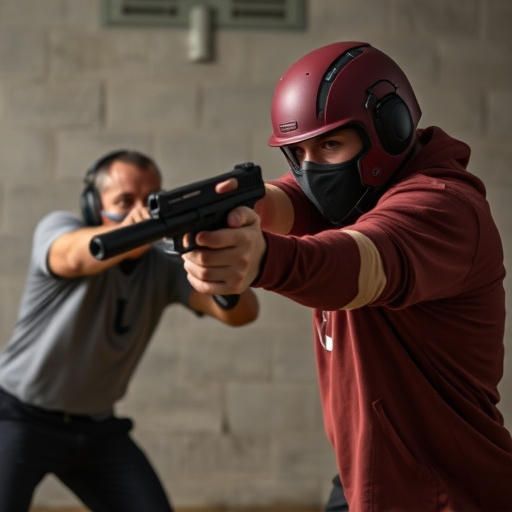
To ensure the safe and effective use of your stun gun for personal protection, proper maintenance and storage are paramount. Start by keeping it in a secure, dedicated case that protects the device from physical damage and prevents accidental activation. Store it in an easily accessible location, but not within reach of children or unauthorized individuals. Regularly inspect the battery life and ensure the device is charged; consider using a wall charger to maintain optimal power levels. Additionally, familiarize yourself with local laws regarding stun gun ownership and use, as these regulations vary by region.
When handling your stun gun, always wear protective gloves if available to minimize the risk of electrical shock. Keep it clean; wipe down the device periodically with a dry cloth to prevent buildup of dirt or sweat, which could interfere with its performance. Lastly, never point or touch the tip of the stun gun towards yourself or others, as this can cause temporary paralysis and pain—a powerful reminder of why you’re carrying it for protection.
Understanding the functionality, safety protocols, and legal aspects of stun guns is key to using them effectively for personal protection. By mastering targeting techniques and adhering to proper maintenance and storage practices, you can ensure the safe deployment of this non-lethal self-defense tool. Remember, responsible ownership and understanding how to safely use a stun gun can significantly contribute to your security in unexpected situations.
